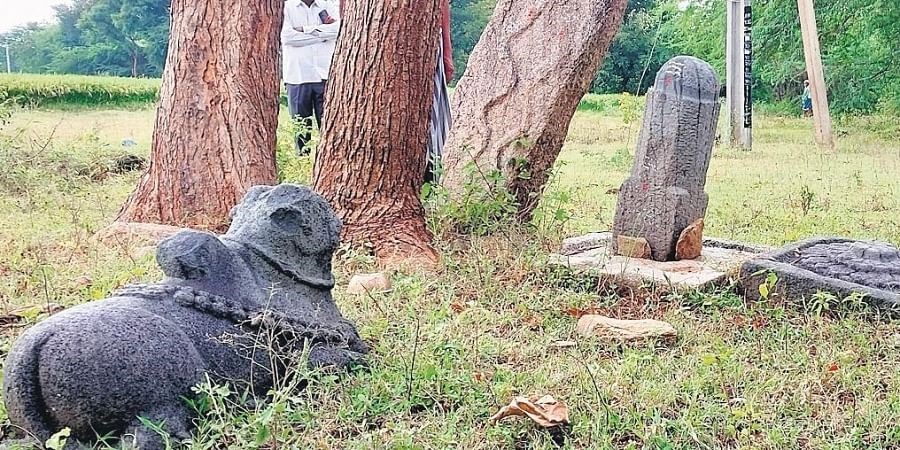Description

Disclaimer: Copyright infringement not intended.
Context
- Ancient inscriptions, hero stones and idols of Shiva Linga and Nandi have been unearthed in Cholemarri village in Andhra Pradesh.
- One of the inscriptions, located east of Cholemarri village, dates back to the Nolamba Pallava King - Mahendra Nolambadhi Raja (875-897) regime.
Details
- The Nolambas were a prominent medieval South Indian dynasty that exerted political influence over southeastern Karnataka, parts of Tamil Nadu, and Andhra Pradesh from the 8th to the 12th centuries CE.
Territorial Dominance
- They ruled over a region called Nolambavadi, comprising parts of southeastern Karnataka, Tamil Nadu, and Andhra Pradesh.
- The dynasty served as vassals to major ruling powers of the time, including the Pallavas, Chalukyas of Badami, Gangas, Rashtrakutas, and later, the Chalukyas of Kalyani.
.jpg)
Political Evolution
- Initially, the Nolambas were feudatories to various dominant dynasties.
- They shifted their allegiance between the Pallavas and the Chalukyas, with historical indications of ties to the Pallava family.
Founder and Origin
- Mangala Nolambathi Raja (735–785 A.D.) is considered the founder of the Nolamba dynasty.
- They emerged as governors during the ascendancy of the Pallavas and Chalukyas.
Capital Cities
- The dynasty's initial capital was Chitradurga and later moved to Hemavati in modern Andhra Pradesh, serving as the capital between the 8th and 10th centuries AD.
Political Dynamics and Decline
- They were adjacent to the territories of Pallava feudatories before aligning with the Chalukyas under the protection of Vikramaditya I.
- Decline ensued with the defeat by Ganga king Marasimha, claiming to have eradicated the Nolamba family.

Cultural Contributions
- Notable temples constructed by the Nolambas were dedicated to Lord Shiva, showcasing their Shaivite religious affiliations.
- Temples such as the Kalleshwara Temple in Aralaguppe, Bhoganandishwara Temple in Nandi, and Ramalingeshwara Temple in Avani are attributed to their architectural prowess.
|
PRACTICE QUESTION
Q. Discuss the socio-political significance and architectural contributions of the Nolamba Dynasty in South India during the medieval period. How did their political alliances and cultural affiliations shape their rule and legacy in the region? (250 words)
|
















